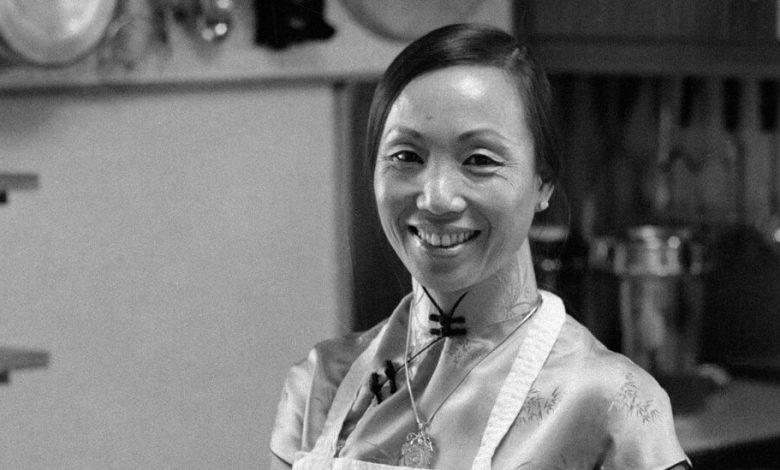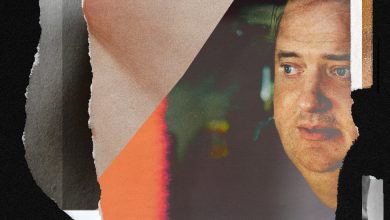Eileen Yin-Fei Lo, 85, Dies; Taught Americans How to Cook Chinese Food

Eileen Yin-Fei Lo, a pioneer in teaching Americans to cook traditional Chinese food, died on Nov. 13 at her home in Montclair, N.J. She was 85.
Her son Stephen Ferretti, who confirmed the death this month, said the cause was a heart attack. Her death was not widely reported at the time.
Ms. Lo stood 4-foot-9, but her presence loomed large over Chinese cooking in the United States. She wrote 11 cookbooks, won a James Beard Award and remained committed to her mission of codifying traditional Chinese cooking techniques, a mission that began when U.S. diners were more aware of Americanized dishes like chop suey and chow mein.
She changed that narrative, Grace Young, the Chinese American cookbook author, said in an interview. “Because of authors like Eileen, Cantonese cooking has become part of America’s culinary traditions.”
Ms. Lo was born on May 4, 1937, in Guangzhou, China, the capital of Guangdong Province, also known by the Anglicized name Canton and the home of Cantonese cuisine. Her father, Pak Wen Lo, worked for the government, and her mother, Miu How Chen, was a homemaker. Her family fled the country during the Chinese Revolution in the 1940s and settled in Hong Kong, where she met the American journalist Fred Ferretti, who was on assignment for the military publication Stars and Stripes. The two married in 1959 and moved to Queens before settling in Montclair. (Mr. Ferretti died last March.)
Dinner party guests would rave about her Chinese cooking, so in 1972 she started conducting cooking classes out of their home. The couple were inseparable, Stephen Ferretti said, and shared a deep connection over food. They even reviewed restaurants together for The New York Times, where the elder Mr. Ferretti began working in 1969.
“We would go to a restaurant, it could be Italian or Chinese, we would eat something, and my dad would look at Eileen and say, ‘What is in here?’” Stephen Ferretti said. “She would say, ‘This is double fried, the oil is old, they are supposed to use peanut oil but they used corn or vegetable.’”
Ms. Lo’s first cookbook, “The Dim Sum Book,” was published in 1981. In it, she taught people how to prepare dishes like won tons, siu mai and char siu bao, buns stuffed with barbecued pork, offering precise instructions in a warm, inviting voice. “These are things that people weren’t aware of or exposed to” at the time, Mr. Ferretti said. “I remember she would do the soup dumplings and people would be like, ‘How do you get soup in here?’”
That book was followed by 10 others, including “Eileen Yin-Fei Lo’s New Cantonese Cooking” (1988) and “Mastering the Art of Chinese Cooking,” a compendium of Ms. Lo’s greatest hits, published in 2009.
Writing in The Times in 1989, Florence Fabricant praised “New Cantonese Cooking” for its departure from the Chinese food that many Americans knew. “The book is timely in view of the growing interest in true Cantonese cooking, as opposed to the westernized chop suey cuisine familiar to many Americans,” she wrote. “The fresh, delicate but richly seasoned cooking of Canton is explained with considerable insight.”
Sydny Miner, who edited Ms. Lo’s 2003 book, “The Chinese Chicken Cookbook,” said in an interview that her recipes deftly walked the line between accessibility and authenticity.
But Ms. Lo’s desire to educate people went beyond cookbooks.
She would frequently take friends and colleagues to Chinatown in Lower Manhattan, where she taught them how to navigate the shops and restaurants and showed them her favorite places to get ginger, sausage or dim sum.
“Everybody loved her,” said Justin Schwartz, who edited a few of Ms. Lo’s cookbooks in the 1990s. “She would getprivate side rooms you didn’t even know existed on upper floors of restaurants in Chinatown.”
Mr. Schwartz had several Christmas Day lunches at Ms. Lo’s home. “She’d come out with trays of 100 dumplings and just the most exquisite, incredible Chinese food,” he said.
Her kitchen, he said, was unlike any he’d ever seen: giant steamers, pegboards on the walls filled with woks and strainers, cabinets filled with all kinds of noodles. “This was a hardcore working kitchen,” he said.
Ms. Lo befriended acclaimed chefs like Charlie Palmer and David Burke and taught them to cook Chinese food in their establishments. Mr. Burke hired her in the mid-1990s to help create a dim sum brunch menu at his restaurant Park Avenue Cafe.
“She came in like Ricochet Rabbit, and she ran circles around my cooks,” Mr. Burke said. “She started, in a cute way, yelling at them, like, ‘No, no, do it this way, let me show you.’”
She would often work in the restaurant for 12 hours straight, he said, adding, “She was a perfectionist.”
She didn’t hesitate to make her opinion known if she felt the food at a Chinese restaurant wasn’t up to par. Often she would end up speaking to the chef, Stephen Ferretti said. “She is talking to Chinese chefs from Asia, saying: ‘Forget about this Americanized audience. You need to make it this way.’”
Mr. Schwartz, the editor, said this headstrong attitude extended to her books. He would suggest changes to her recipes, saying that people wouldn’t be able to find a certain ingredient, he recalled, and “she would put her foot down and say this has to be preserved, this is the way it is really done.”
Mr. Schwartz said that while Ms. Lo’s cookbooks didn’t always sell well, they had a timeless quality.
“It is rare when I feel like a book I am doing is really important, that it really educates and there is a permanence to them,” he said — but Ms. Lo’s books were an exception.
Ms. Lo never attempted to cultivate an online presence, but she had a dedicated following nonetheless.
Mr. Ferretti remembered attending a class that she taught at De Gustibus Cooking School at Macy’s in 2009. “At the end of it, people are coming up and taking selfies with her,” he said, “and I am thinking, ‘Wait a minute, this woman has no online presence and doesn’t do any social media.’ It is strictly because these are people from all over who like her book and her recipes.”
The field of Chinese food writers is more crowded now, but many of them still see Ms. Lo as the foremost expert.
“I use her cookbooks as guidelines to look at: OK, how would she have done it?” said Lynette Lo Tom, the author of multiple cookbooks, including “A Chinese Kitchen.”
In addition to her son Stephen, Ms. Lo is survived by another son, Christopher, and a granddaughter. She is also survived by a trove of recipes that made dishes like Sichuan beef and tea-smoked duck doable for an American home cook.
Her Peking duck recipe holds particular significance for Stephen. She would use a bicycle pump to separate the fat from the skin and make her hoisin sauce from scratch, he said.
He added that he has attempted the recipe several times. It never comes out like his mother’s.





